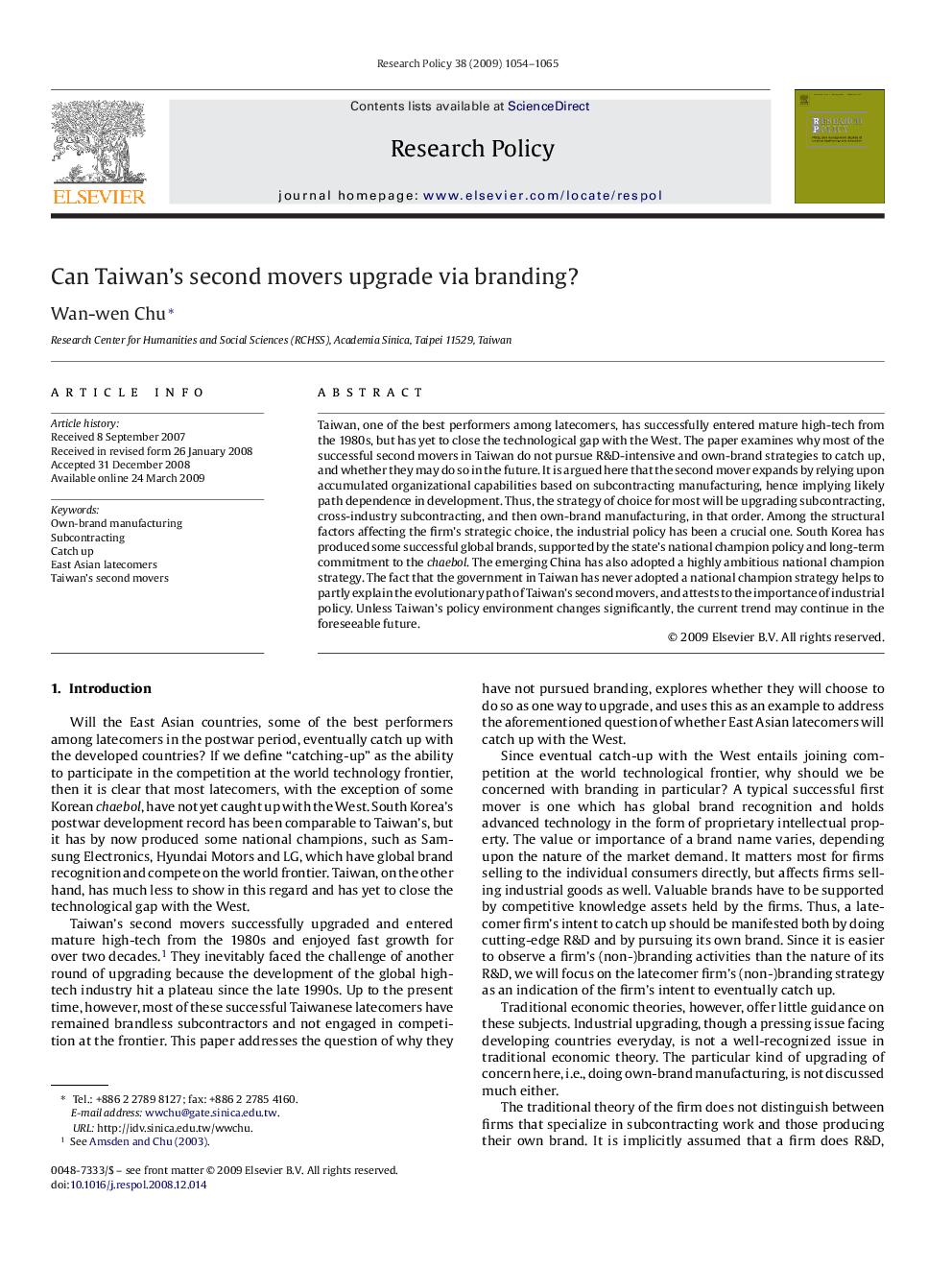| Article ID | Journal | Published Year | Pages | File Type |
|---|---|---|---|---|
| 984717 | Research Policy | 2009 | 12 Pages |
Taiwan, one of the best performers among latecomers, has successfully entered mature high-tech from the 1980s, but has yet to close the technological gap with the West. The paper examines why most of the successful second movers in Taiwan do not pursue R&D-intensive and own-brand strategies to catch up, and whether they may do so in the future. It is argued here that the second mover expands by relying upon accumulated organizational capabilities based on subcontracting manufacturing, hence implying likely path dependence in development. Thus, the strategy of choice for most will be upgrading subcontracting, cross-industry subcontracting, and then own-brand manufacturing, in that order. Among the structural factors affecting the firm's strategic choice, the industrial policy has been a crucial one. South Korea has produced some successful global brands, supported by the state's national champion policy and long-term commitment to the chaebol. The emerging China has also adopted a highly ambitious national champion strategy. The fact that the government in Taiwan has never adopted a national champion strategy helps to partly explain the evolutionary path of Taiwan's second movers, and attests to the importance of industrial policy. Unless Taiwan's policy environment changes significantly, the current trend may continue in the foreseeable future.
